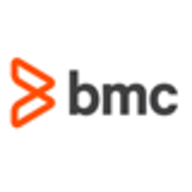


Red Hat Ansible Automation Platform and BMC TrueSight Network Automation are prominent automation tools. Users prefer the feature set of Red Hat Ansible Automation Platform, while BMC TrueSight Network Automation is favored for its robustness and stability.
Features: Red Hat Ansible Automation Platform offers extensive automation capabilities, enabling efficient management of various IT tasks. Users highlight its flexibility and ease of integration. BMC TrueSight Network Automation impresses with its comprehensive network management features, providing in-depth visibility and control. Red Hat's versatility in handling different environments gives it an edge.
Room for Improvement: Users suggest Red Hat Ansible Automation Platform could enhance its documentation and simplify its initial setup. BMC TrueSight Network Automation users desire more intuitive workflows and additional integrations. Each product has room to address specific user feedback to improve its offering.
Ease of Deployment and Customer Service: Users find Red Hat Ansible Automation Platform relatively straightforward to deploy and appreciate the support provided. BMC TrueSight Network Automation is considered more complex during deployment, though users acknowledge its responsive customer service. Despite BMC's complexity, its support quality is well-regarded.
Pricing and ROI: Red Hat Ansible Automation Platform is often mentioned for its cost-effectiveness, presenting a strong ROI for users. BMC TrueSight Network Automation, while more expensive, is perceived as delivering substantial value due to its comprehensive feature set. The higher upfront costs for BMC are justified by its long-term benefits in user reviews.
Everything we've gained from it makes my job easier day after day, and I see value in it as an engineer.
Importantly, when someone leaves the company, it helps protect document access on their devices.
Applications are deployed through Intune, and we see fewer tickets for common issues because we can resolve them through the solution.
When a support ticket is submitted, it directly reaches someone with Intune support expertise.
When I contacted Microsoft, they had the same expertise, if not more, which is phenomenal because I felt heard and my problem was solved.
Sometimes, the support provided is excellent, and the representative is knowledgeable, while other times, the service needs improvement.
The scalability of Microsoft Intune is ten out of ten.
Ideally, we want to automatically segregate devices based on user properties like primary use, but currently, dynamic groups seem limited to device properties.
It supports organizations with 200 endpoints and those with more than 15,000 endpoints.
Ansible can face scalability issues, such as limitations when trying to scale up infrastructure.
We have not experienced downtime, bugs, or glitches.
Microsoft Intune has been very stable.
A couple of years ago, the performance was not as good as it is now, but there are noticeable backend improvements.
Features like unlocking devices sometimes fail, and the support offered for other operating systems is insufficient.
There are communication issues, so you might start working with a feature without knowing if it will be deprecated six months from now.
Many third-party companies offer single-pane-of-glass reporting that shows you what your update environment looks like, how your patch is doing, application status, etc., but Intune's reporting is not intuitive.
More library support for microservices architecture and Kubernetes would be helpful.
More detailed dashboards would be beneficial because there is a lack of dashboards on Red Hat Ansible Automation Platform.
Introductory professional services, like a fast-track service, were included with our E5 membership, and there have been no additional costs.
The Intune suite and add-ons, such as batch management and remote help, are costly.
It costs approximately forty euros per user per month.
The pricing is high, and since I'm not using all functionalities, it would be better if the price depended on the functionalities used.
Intune excels in configuration and compliance management for Windows 10, ensuring devices receive timely updates and adhere to organizational standards.
Dynamic groups allow us to set conditions for automatic membership, eliminating the need for user intervention or manual review and ensuring a seamless workflow.
Windows Autopatch is the most valuable because it removes the burden of patch management.
The automation capabilities streamline deployment processes, providing reliability and reducing manual intervention and errors.
It makes it simple to develop Ansible playbooks and roles, which aids in simplifying my daily administrative tasks.



Microsoft Intune provides centralized management of mobile devices and applications, ensuring security, compliance, and productivity through integration with Microsoft services like Microsoft 365 and Azure Active Directory.
Organizations use Intune for managing mobile devices and applications, enhancing security and compliance across platforms. With features like single sign-on, conditional access, and zero-touch deployment via Autopilot, it facilitates efficient operations. Intune's scalability, easy enrollment, and capabilities such as remote wipe support diverse device management, offering robust data protection and efficient operation. Despite its features, improvement areas include reporting, compatibility with non-Microsoft devices, and better support for macOS and Linux devices.
What are the key features of Microsoft Intune?
What benefits should users look for in reviews?
In industries such as finance, healthcare, and education, Microsoft Intune is implemented to ensure secure and compliant device management. Companies leverage its capabilities to deploy security policies and manage both corporate-owned and BYOD environments, facilitating a unified approach to data protection and compliance.
Network automation and management software reduces network outages and downtime by automating configuration, change and compliance processes. Organizations depend on high performance across their network to keep the business running at peak efficiency but new security threats make it hard for network administrators to keep pace with the demands for new services and safeguard the health of the network.
Red Hat Ansible Automation Platform is a powerful network automation solution that allows organizations to handle every aspect of their application launch process within a single product. It enables users to share their automations so that teams within an organization can collaborate on various projects with ease. Ansible Automation Platform is designed to be used by all employees involved in the network automation process.
Red Hat Ansible Automation Platform Benefits
Some of the ways that organizations can benefit by choosing to deploy Red Hat Ansible Automation Platform include:
Red Hat Ansible Automation Platform Features
Reviews from Real Users
Red Hat Ansible Automation Platform is a highly effective solution that stands out when compared to many of its competitors. Two major advantages it offers are its automation manager and its comprehensive centralized GUI-based management interface.
MD J., a solution architect at STBL, says, “The automation manager is very good and makes things easier for customers with multi-cloud platforms.”
Aankit G., a Consultant at Pi DATACENTERS, writes, “We like the GUI-based interface for the tower. Before, we only had a command-line interface to run all the Ansible tasks. Now, the Ansible tower provides the complete GUI functionality to run, manage, and create the templates and the Ansible jobs. This includes the code and YAML file we can create. The GUI interface is the added advantage of this solution, including some integration with the different plugins.”
We monitor all Configuration Management reviews to prevent fraudulent reviews and keep review quality high. We do not post reviews by company employees or direct competitors. We validate each review for authenticity via cross-reference with LinkedIn, and personal follow-up with the reviewer when necessary.